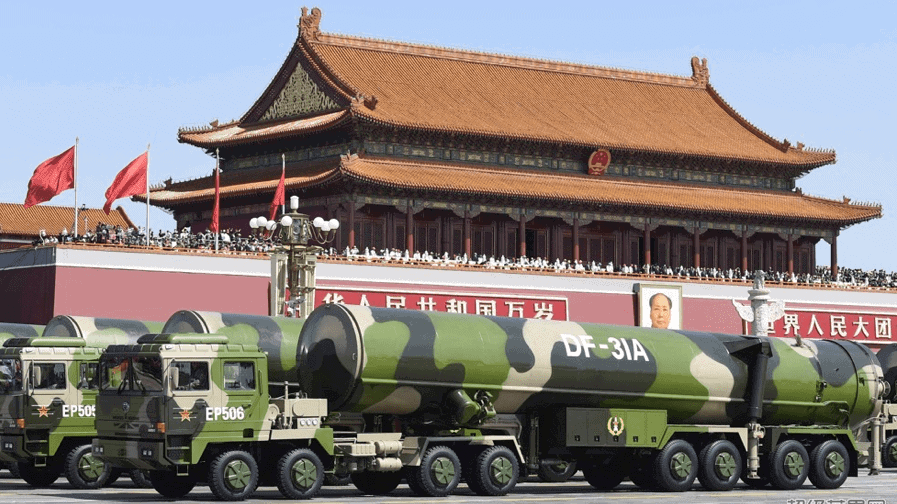China quietly builds up its nuclear weapon arsenal

Has Beijing had a change of heart and revived its fondness for weapons of mass destruction while other world powers are in talks to reduce them? It seems so.
China quietly added at least 30 nuclear warheads, some already deployable, to its stockpile in 2019, the Stockholm International Peace Research Institute said, citing sources within the country and the Rocket Force of the People’s Liberation Army (PLA).
“China is in the middle of a significant modernization and expansion of its arsenal,” the think tank said.
At its annual session last month, China’s parliament approved a 1.27 trillion yuan (US$179 billion) budget for the PLA, up 6.6% year-on-year. The move came as Washington was aiming to include Beijing in talks with Moscow to cut each other’s inventory of nuclear and other strategic arms and dismantle retired stocks.
Details about the PLA’s nuclear tactics, especially related to production, capacity-building and deployment, are always concealed from overseas observers. But it is generally believed that the Chinese military houses its warheads across a number of bases in inland provinces, in particular the far-west Xinjiang, where China detonated its first atomic bomb in 1964 and its first hydrogen bomb three years later.
In July 1996, having conducted its 45th and final nuclear test at Lop Nur, a remote, largely dried up salt lake in an arid basin on the edge of a massive desert in southern Xinjiang, then-Chinese President Jiang Zemin declared a formal moratorium on nuclear testing, although further subcritical tests have likely been held over the following years.
The nuclear test base near Lop Nur has since been converted into a tourist attraction, as the PLA shifted its nuclear research and development elsewhere across Xinjiang and the western province of Sichuan.
Some military observers, including Jun Takada, a Japanese scientist and activist known for prominently opposing nuclear tests, note that large areas in backwater provinces like Xinjiang, Sichuan, Qinghai and Inner Mongolia are off-limits to locals and visitors. Some saw those closed areas as evidence of the PLA’s active nuclear stockpiling.
To be sure, the size of China’s nuclear arsenal lags way behind those of the United States and Russia. The US-based Federation of American Scientists estimated China had about 320 warheads, all stockpiled, as of 2019, compared with America’s 5,800 and Russia’s 6,370
Both countries also have more than 1,500 already deployed, either placed on missiles or on bases with operational forces
Earlier this year, Hu Xijin, the chief editor of China’s state-owned tabloid Global Times, stirred a commotion with his posts on Weibo that claimed there was not an atom of truth in the international media’s renewed smear campaign of China’s military modernization.
He suggested the PLA should more than triple its nuclear inventory to at least 1,000 warheads to match the US and reflect China’s overall strength. It is believed Hu was channeling calls from the military and the party’s hardcore faction for more funding and resources for the PLA.
When asked if Beijing had shifted its approach to nuclear development and nonproliferation, Chinese Foreign Ministry spokeswoman Hua Chunying stressed that countries with much bigger arsenals should have a bigger responsibility and that Beijing would stand by its “no first use” pledge.
Whether the increase in Beijing’s nuclear inventory is a breach of its commitment to nuclear nonproliferation is a moot point. The fact is that China is not the only power investing in its nuclear arsenal.
India, Britain, Pakistan, Israel and North Korea are all increasing their capabilities, yet each country added fewer than 20 warheads last year.
But by taking the lead in an emerging new nuclear arms race, Beijing may have given the Pentagon more justification to restart its own nuclear testing, ending a decades-long hiatus since 1992.
Photo: DF-31A missiles, the tailor-made launch vehicles for Chinese nuclear warheads, seen during a military parade in Tiananmen Square in Beijing. Photo: Xinhua
Link: https://asiatimes.com/2020/06/china-quietly-builds-up-its-nuclear-weapon-arsenal/











